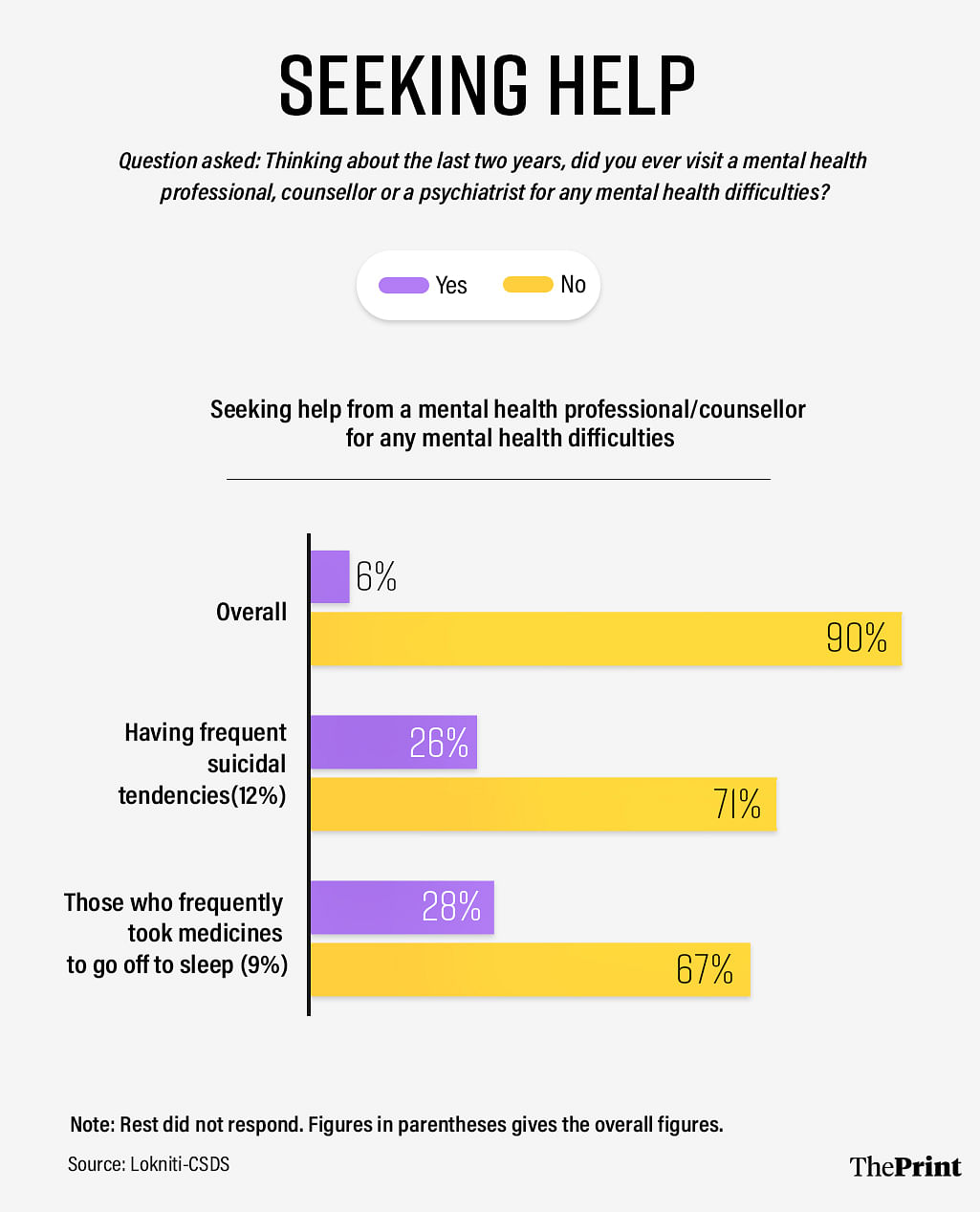The importance of mental health has generally been overlooked in India, but there is now a growing recognition of its significance, particularly concerning the overall well-being of young individuals. This awareness has been further underscored by the enduring impacts of the pandemic. Consequently, addressing and prioritising mental health concerns have become increasingly crucial in recent times. A recent study conducted by Lokniti Centre for the Study of Developing Societies, which interviewed 9,316 youth aged 15-34 years across 18 states, offers valuable insights into the mental well-being of the country’s youth.
Pandemic and mental health
The stay-at-home orders during the Covid -19 pandemic yielded both positive and adverse effects on the youth. While some experienced quality time with family and pursued new interests, others grappled with disrupted education and employment, social isolation, and heightened emotional distress. As we move beyond the pandemic, the world continues to struggle with its aftermath, and the younger generation, in particular, faces the task of adapting to the new normal.
The data highlights that approximately 35 per cent of the youth who had pre-existing mental health difficulties before the pandemic have reported a worsening of their conditions during the pandemic (Graph 1). Furthermore, a quarter of individuals who were grappling with mental health challenges prior to the pandemic reported that their mental well-being remained unchanged. This suggests that this particular demographic is still facing persistent mental health challenges. Worryingly, nearly 18 per cent of the youth who were previously unaffected by mental health challenges reported deterioration in their mental health during the pandemic. The data also highlights that around 34 per cent of the youth who had mental health concerns before the pandemic reported an improvement in their mental health. These findings highlight the role of the pandemic in exacerbating the mental health concerns of young individuals, emphasising the need for immediate attention and support.

Also Read: Everyone’s a therapist in India—influencers, dentists, homeopaths. It’s the new epidemic
Increase in negative emotions
The youth has also been significantly impacted by a surge in anger, anxiety, sadness, depression, and frustration (Graph 2). Approximately, two out of every five young Indians (43 per cent) felt an increase in anger, while 40 per cent experienced heightened anxiety and 39 per cent reported feeling more sadness. Furthermore, 36 per cent of the young Indians reported heightened feelings of frustration, and 31 per cent dealt with increased depressive emotions. These findings emphasise the emotional challenges the youth has faced in the past two years. A greater proportion of employed youth seemed more susceptible to negative emotions compared to students, housewives, and the unemployed. This raises concerns about the well-being of young people in the workforce. The study also found one in every three youth have felt an increase in loneliness, general fear and fear of death (36 per cent each). This may be the result of multitudes of stressors including employment pressures, relationship conflicts and the constant barrage of information from social media. The fears can also be related to the uncertainty that surrounded everyone during the pandemic.
Physical and mental well-being are closely interconnected and can have a significant impact on each other and the study revealed that one in every three youth have witnessed an increase in body pain, mood swings (36 per cent each) and fatigue (37 per cent) in the last two years.

Also Read: Mental health insurance picking up in India. Employers are also listening—without prejudice
Suicidal tendencies among the youth
The study also tried to gauge suicidal tendencies among Indian youth. It found that approximately one-tenth (12 per cent) of Indian youth reported frequently experiencing thoughts of self-harm or ending their lives (Graph 3). Another 12 per cent admitted having such thoughts but rarely, while a substantial three-fourths (73 per cent) stated never having these feelings. Furthermore, the study highlighted a significant link between economic background and suicidal tendencies. Youth from poor economic backgrounds exhibited a higher likelihood of suicidal tendencies (17 per cent) compared to their counterparts from more affluent backgrounds (11 per cent). In terms of gender differences, the study revealed that young men showed a slightly higher propensity for suicide (13 per cent) than women (11 per cent). Here again, employed youth exhibited the highest suicidal tendencies (17 per cent) compared to those seeking employment or currently unemployed (7 per cent).

Also Read: India’s mental health conversation is opening up. Better access to treatment is next
Seeking help
The study inquired about the youth’s interactions with mental health professionals over the past two years, and the results were concerning (Graph 4). Only 6 per cent reported having visited a doctor or therapist for mental health concerns. It was found that 9 per cent of the youth resorted to frequently using sleeping medicines to help them fall asleep. Perhaps the most troubling finding is that close to seven out of ten youngsters who frequently took sleeping pills to go off to sleep in the last two years did not seek any form of help. Even more alarming was the fact that seven out of ten individuals who frequently experienced suicidal thoughts had not sought help from a mental health expert. This highlights a significant issue wherein a considerable number of young people grappling with suicidal tendencies are not accessing the essential support and guidance from mental health professionals. Although there has been an increase in awareness about mental health and well-being there still exists a social stigma which prevents people from openly talking about these problems and seeking help.

Sanjay Kumar is a Professor at the Centre for the Study of Developing Societies (CSDS). Vibha Attri is a researcher with Lokniti-CSDS. Views are personal.
(Edited by Theres Sudeep)



